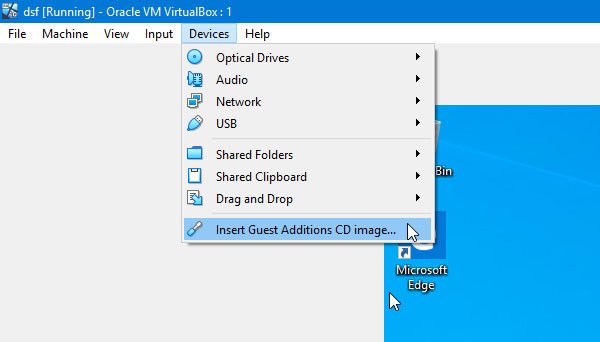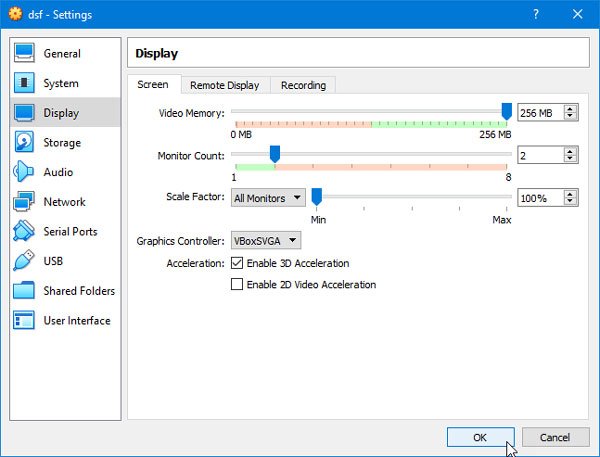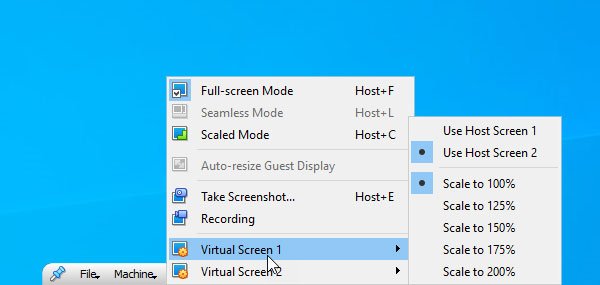To be able to use VirtualBox on Multiple Monitors with any virtual machine, you need to change the default settings. If you have a dual monitor setup and you want to use both screens with your guest OS, this post will guide you. Like VMware, VirtualBox doesn’t detect the second monitor unless you make some changes. This will help you change the specific settings to start using more than one monitor.
Use Dual Monitor with VirtualBox virtual machine
You need to carry out these steps to enable dual monitor for VirtualBox virtual machine-
- Install Guest Additions CD image
- Allow the second monitor
- Enable the second monitor
- Extend display.
To get started, you need to install the Guest Additions CD image. There is no need to download anything else since your VirtualBox installation comes with this package. By default, it doesn’t install the package, but this is required to get lag-free user experience.
To install Guest Additions CD image, open VirtualBox, start the guest OS and make sure you are logged into the system.
After that, go to Devices > Install Guest Additions CD image. Alternatively, you can press right Ctrl + D.

You should get a popup on your screen. Follow the screen instructions to finish the installation. After that, you need to add the second monitor to your virtual machine. For that, open the VirtualBox > select the virtual machine > click the Settings button.
Then, go to the Display section and make sure you are in the Screen tab. From here, you need to assign the maximum video memory to your virtual machine. For that, use the Video Memory bar to provide the maximum available video memory. Secondly, select two (2) in the Monitor Count box.

These two settings are mandatory. However, if you want better performance, you can select the Enable 3D Acceleration checkbox. After making all the changes, click the OK button to save.
Now start your virtual machine and press Host + F buttons together. By default, the right Ctrl is the Host button. After that, you have to assign a virtual screen to a host screen. For that, go to View > Virtual Screen 1 > Use Host Screen 1.

Similarly, go to View > Virtual Screen 2 > Use Host Screen 2. Now you can find the virtual machine on both monitors. Also, if you want, you can use Host Screen 2 for Virtual Screen 1 as well.
I hope this simple solution will be helpful for you.
How do I use virtual desktop on two monitors?
To use a virtual desktop on two monitors, ensure that your operating system supports multi-monitor configurations. Go to your display settings and select the option to extend your desktop to the second monitor. This will allow you to drag and drop applications between the two screens and maximize your productivity.
How do I add a second monitor to my virtual machine?
To add a second monitor to your virtual machine, follow these steps: In the VirtualBox settings, increase the “Monitor Count” to 2 and adjust the video memory if needed. Install Guest Additions on your guest OS. Start the guest and use the standard method for your OS to extend the desktop onto the second monitor. These steps should enable you to use a second monitor in your virtual machine.
Read next: How to use dual monitor with VMware virtual machine.